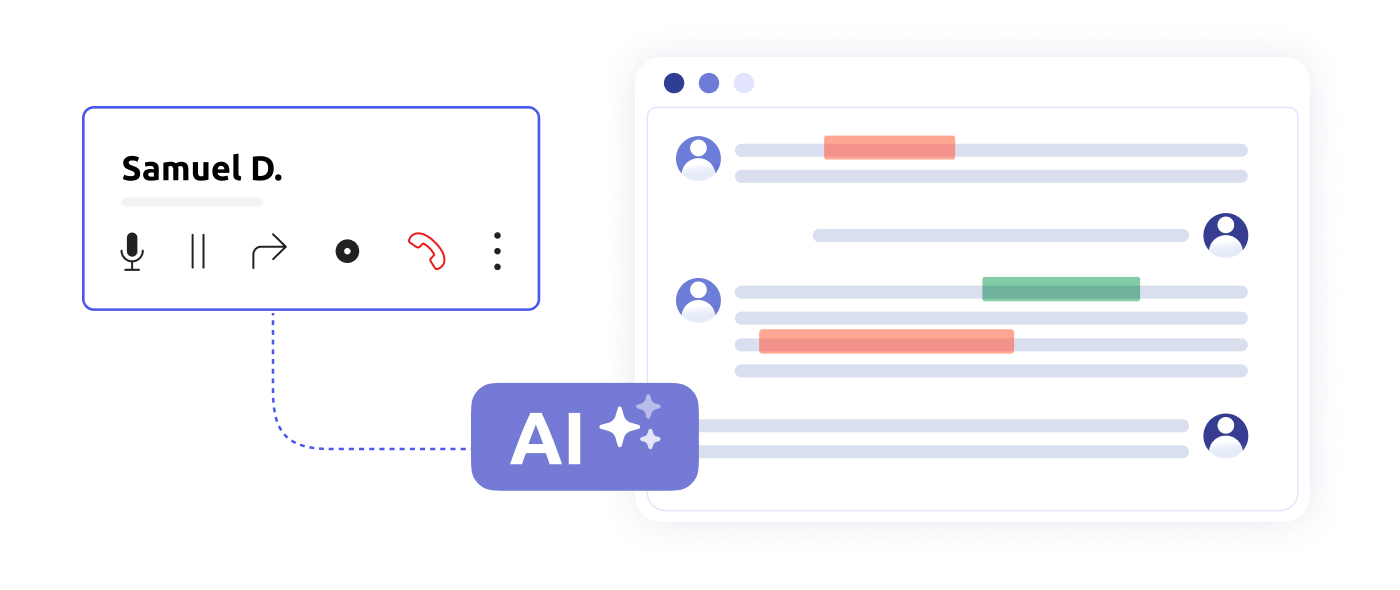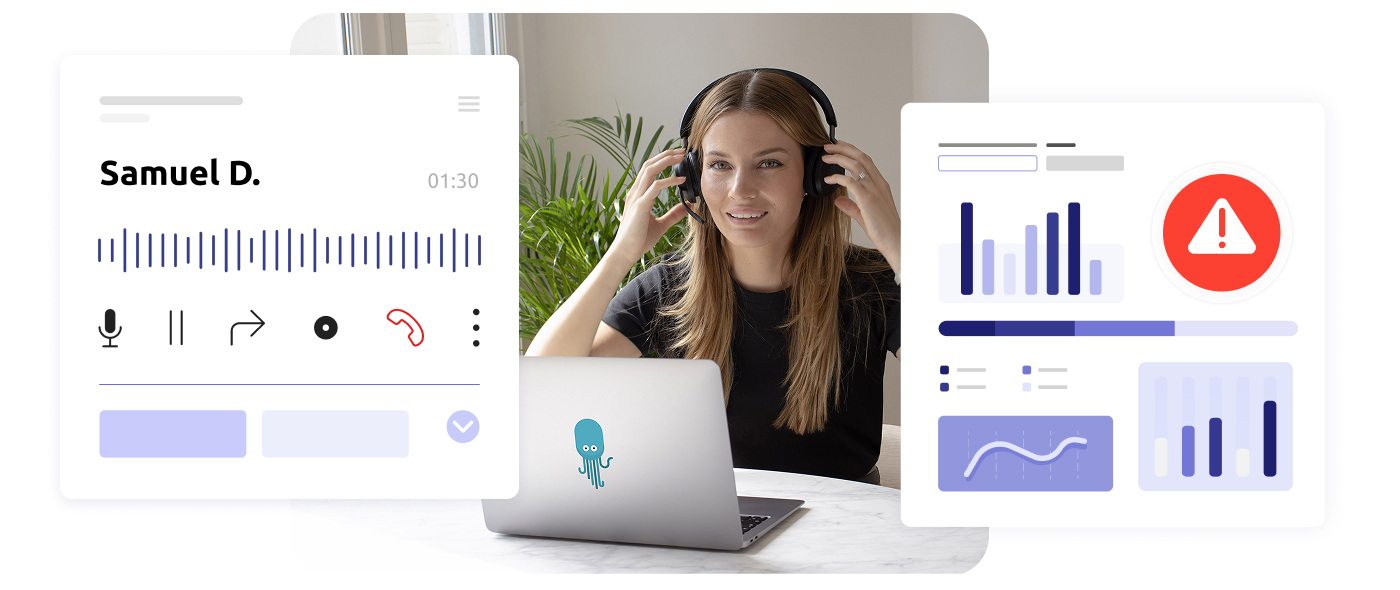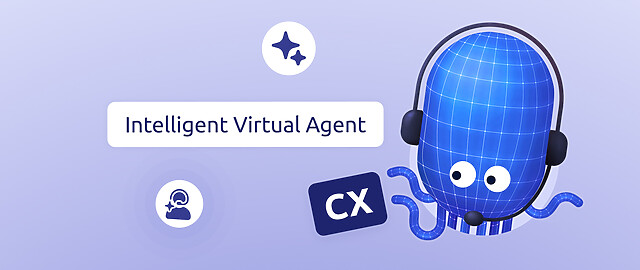Why KPIs Alone Won’t Help You Understand the Customer’s Voice
Contact center tools typically produce a flood of KPIs: average call time, first contact resolution rate, contact reason breakdowns, and more.
These metrics are useful for managing operations, but when it comes to explaining a dip in NPS or a rise in complaints, they’re not enough. You might know what happened, but not why.
To fill the gap, quality teams turn to call listening or verbatim analysis. While these methods provide occasional insights, they’re time-consuming, subjective, and not scalable across the full volume of customer interactions.
Automatic transcription is often promoted as a solution for large-scale analysis, but without a robust voice of the customer analysis engine behind it, it mostly delivers walls of text or “word clouds”, rarely tapped for strategic use.
You may catch keywords or themes, but miss what truly matters to your customers.
Voice of Customer Analysis: Best Practices

Detecting Subtle Patterns in Customer Conversations
Effective voice of customer analysis starts with transcripts, but the best tools don’t stop there. They surface unusual phrases, recurring language structures, and topics that appear repeatedly, but may be scattered throughout different calls.
These faint patterns, often buried in noise, are what point to deeper issues—like hidden pain points in the customer journey or recurring service breakdowns.
At scale, customer’s voice analysis reveals trends that are otherwise invisible to the human ear.
Uncovering Root Causes
The real power of voice of the customer analysis lies in its ability to highlight systemic issues.
An agent may hear the same complaint about a website feature ten times, but never report it due to a lack of reporting process or confidence. A smart analytics tool, however, can detect that repetition across calls and flag it: there’s a consistent, structural problem here.
Whether it’s a broken feature, a confusing customer journey, or a misdirected IVR path, any one of these might seem minor. But when voice of customer analysis reveals a pattern, the root cause becomes clear and demands attention.
Connecting Insights to Concrete Action
Voice of customer analysis is only effective when it bridges the gap between data and action. It should enable you to:
- Spot consistent deviations in how scripts are used and document them.
- Identify call types that agents struggle with, and tailor training accordingly.
- Uncover repeated confusion around a product or service, and adjust messaging.
With the right system in place, the customer’s voice turns from static data into a dynamic tool for operational improvement.
3 Warning Signs Your Voice of Customer Analysis Isn’t Working

Vague, Unusable Insights
If your platform reports that “25% of calls mention a technical issue,” it might seem useful, but what now?
Without context–what product, what issue, what part of the journey–this stat means nothing.
That’s often a sign your voice of customer analysis engine is just scanning for keywords, not interpreting what customers are actually trying to say.
No Prioritization of Issues
When every signal is treated the same—long pauses flagged alongside serious billing complaints—teams get overwhelmed with noise.
Not all pain points are equal. Some have minimal impact, others drive churn.
Voice of the customer analysis must rank issues based on severity and impact. Otherwise, your team won’t know where to focus.
No Link to Business Actions
The most critical failure is a lack of follow-through. If no change comes from your voice of customer analysis, the whole system becomes a formality.
You get reports, but no alerts. Insights, but no recommendations. Keywords, but no strategy.
Over time, if the data doesn’t lead to change, it gets ignored and your tool loses all strategic value.
Voice Analytics: A Smarter Approach to Voice of Customer Analysis
To overcome the limitations of traditional tools, Diabolocom offers Voice Analytics, a modern solution for smarter, contextualized voice of the customer analysis.
From Basic Metrics to Rich Conversations
Traditional tools measure volume and duration. Voice Analytics digs into the actual conversation.
With AI built by Diabolocom, every interaction is analyzed within its full context, not just statistically, but semantically.
This is voice of customer analysis reimagined: not just what was said, but what it means.
Structured, Contextual, Multilingual Insights
Voice Analytics uses automatic transcription as a foundation, then adds context.
Instead of just listing keywords, it identifies recurring phrasing, ambiguous language, and key points in the customer journey.
It highlights friction, misunderstanding, and emotional cues, often missed by standard reporting tools.
Tangible Benefits Across Teams
By revealing subtle signals, Voice Analytics helps every team drive performance:
- Managers can track script adherence and improve coaching based on objective data.
- Quality teams uncover hidden friction points across all calls, not just in manual reviews.
- Marketing, product, and CX teams can extract actionable insights that drive continuous improvement.
With Voice Analytics, voice of customer analysis becomes a strategic, organization-wide asset.
Conclusion: Measuring Isn’t Enough, Understanding Is Everything
For years, customer call analysis meant tracking numbers. Minutes, metrics, transcripts, it was all about measurement.
But companies today aren’t just chasing productivity, they’re chasing understanding.
Done right, voice of the customer analysis isn’t just another reporting layer. It’s a lens into the real customer experience.
In an era of complex journeys and rising expectations, it’s no longer enough to optimize touchpoints. Every conversation deserves real attention, and the customer’s voice should be your most strategic resource.
Turn customer insights into action with Voice Analytics



